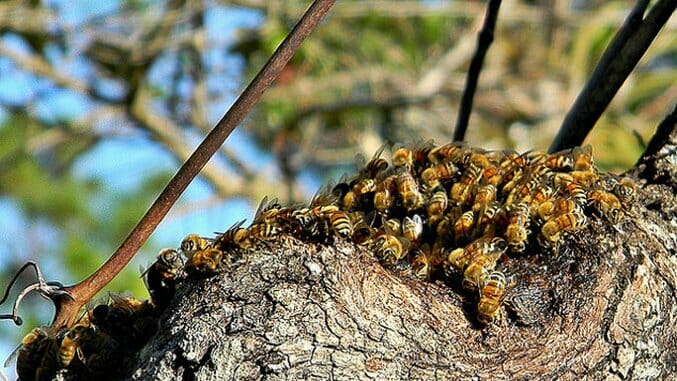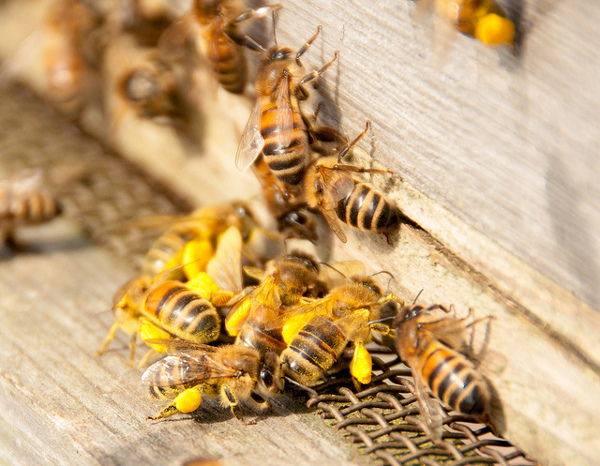All Abuzz About Bees
Things you should know about honeybees

It was a few weeks after we moved into the new house. There was an increasingly insistent and rather unnerving sound emanating from the house – it was humming. It wasn’t the electricity, it wasn’t the plumbing, it wasn’t the big chandelier in the dining room. No one could figure it out. It was easiest to hear in my parents’ bedroom, but it was something we were aware of all over the house.
Then one day we came home from an outing and the master bedroom was absolutely alive with honeybees. They’d built a hive in the wall and were coming in through a light fixture. It was like something out of a horror movie.
It was the early 80s and my folks were not savvy enough to know there was such a thing as hive relocation – the creatures were exterminated. I cried. I think my mom did too. No one wanted to kill honeybees. No one was going to willingly have a swarm of them in their bedroom either. The following spring, I was walking home from the bus stop one day and heard it again – an otherworldly humming, part hummingbird wing, part distant aircraft, part didgeridoo. Then I saw them. A huge swarm of bees, moving en masse, billowing and contracting like a Mandelbrot fractal, pausing in midair here, there, somewhere else. I don’t know if they were related to the bees that lived in my parents’ bedroom wall, but they were clearly seeking new digs. They were, in the original sense of it, awesome.

Paul Rollings CC BY
Here are some things you should know about honeybees.
•They are the only insect that produces a food eaten by humans (in addition to the long hours they put in enabling the reproduction of plants).
•They have 170 odorant receptors. Their keen sense of smell enables things like kin recognition, as well as food locating.
•They can fly at speeds of up to 15 mph – that characteristic buzzing sound is their wings moving at 200 beats per second.
•All “worker” honeybees are female. Male bees do exactly one thing – mate. Go figure. That’s presumably why if food gets scarce or conditions rough, the females will kick the deadbeats out of the nest.
•A queen bee, of which there is one in a colony, can produce up to 2,500 eggs per day.
•Every colony of honeybees has a unique scent for member ID purposes.
-

-

-

-

-

-

-

-

-

-

-

-

-

-

-

-

-

-

-

-

-

-

-

-

-

-

-

-

-

-

-

-

-

-

-

-

-

-

-

-








































